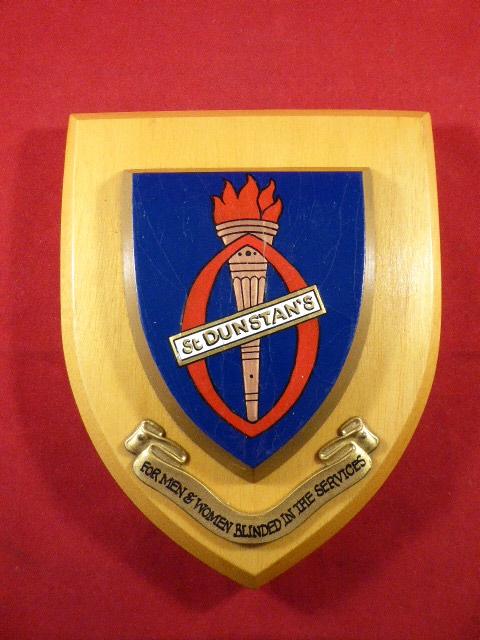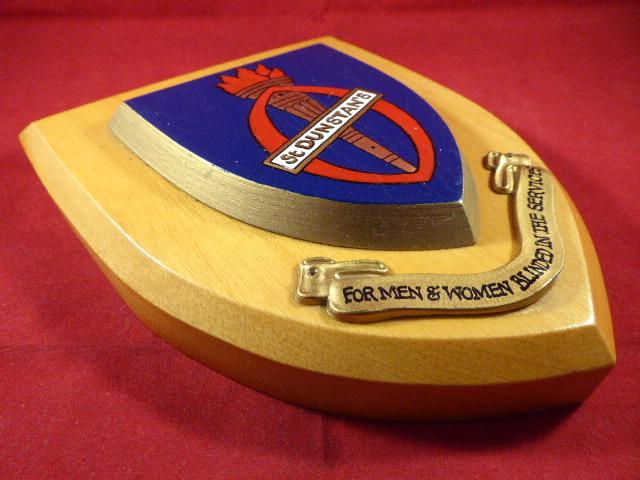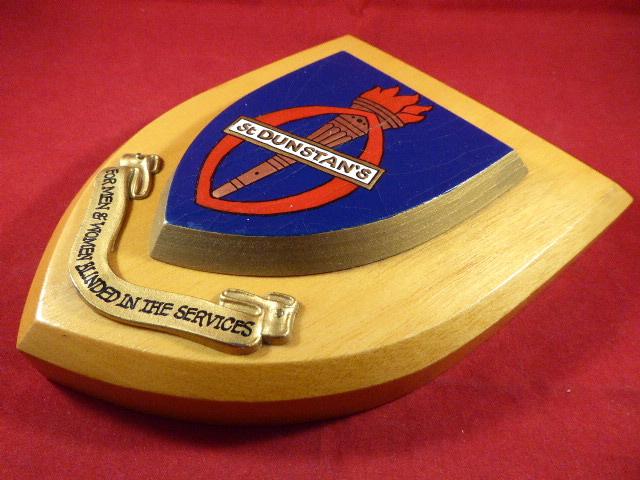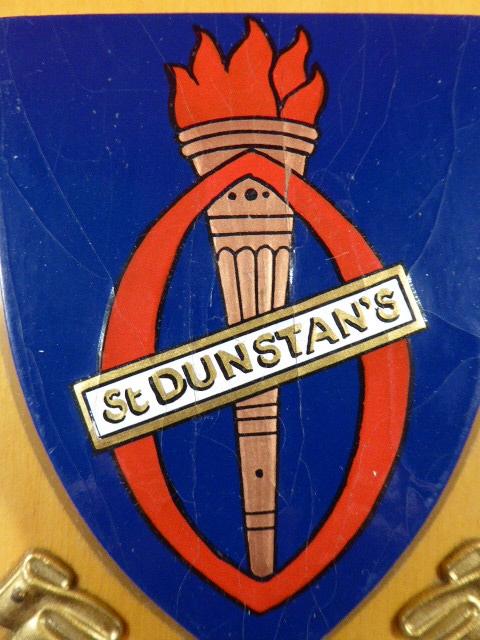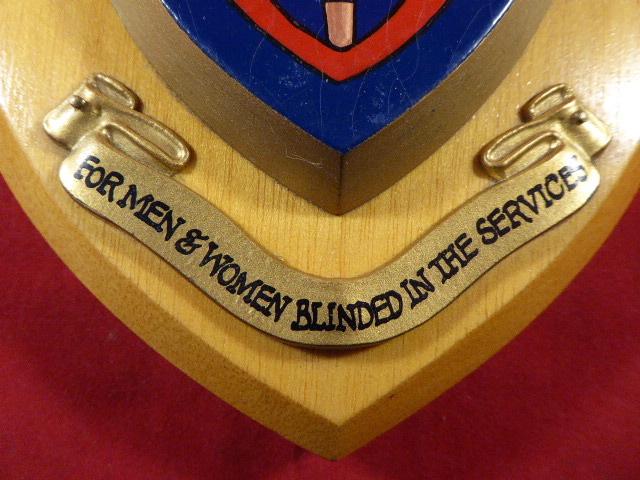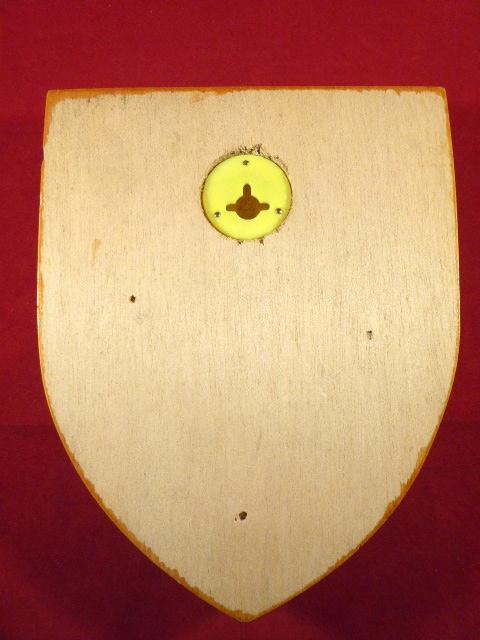Vintage Wooden Plaque for St DUNSTAN’S the Hostel for Blinded Soldier’s and Sailor’s
Here on offer is a vintage shield plaque for "St DUNSTAN’S the hostel for blinded soldiers and sailors.
The hand painted shield shaped St DUNSTAN’s crest has been mounted on to a larger shield shaped wooden plaque that looks to have been cut from a light mahogany wood.
The crest is in excellent condition and retains all its original paint, just some age crazing to the paint finish.
On the back is a recessed plastic hanging hole that can be used to hang it on a wall.
Some history about St DUNSTAN’s:
In 1914 St. Dunstan’s Hostel for Blind Soldiers and Sailors was founded by Sir Arthur Pearson, author of Victory Over Blindness. A year later it moved to a property in Regent’s Park. The idea was to provide a hostel where ex-servicemen would go after they had received hospital treatment to ‘learn to be blind’.
The legacy of the war meant that in 1921 men were still waiting to be accommodated, with 57 men awaiting admission. By 1929 there were still two thousand men in their care. The intake included 103 colonial ex-servicemen who were trained during their time at St Dunstan’s.
The emphasis of the organisation was training, which often involved varying forms of technology that enabled the men to utilise their skills. This included adapted typewriters and telephones, with standardised assessments to encourage employment. St Dunstan’s often found itself in the papers and, as a more understood form of ‘disability’, attracted public sympathy.
There are many reasons soldiers, and indeed civilians, lost their sight during the war. Some injuries were more immediate, such as shrapnel wounds, and others could be diagnosed long after the conflict, with blindness caused by mustard gas being reported 20 years after WW1 ended.
This is a really impressive crest plaque and makes a great display item.
The wooden frame measures 7.25” (18.5cm) by 5.9” (15cm).
It weighs 280g.
Please see my pictures for the details of the condition, which complement this description.
Please see my TERMS OF BUSINESS regarding Deliver Charges and Insurance regarding additional insurance cover, should you require it, BEFORE the item is dispatched.
The responsibility lies with the customer to check with your Customs restrictions that this item can be imported into your country.
Code: 50923
15.00 GBP

